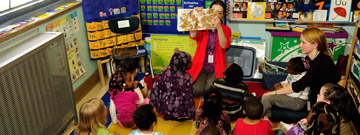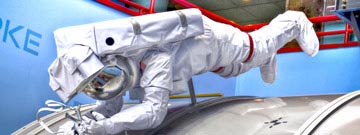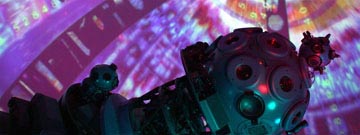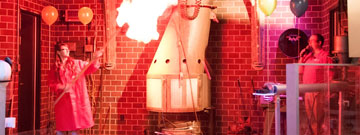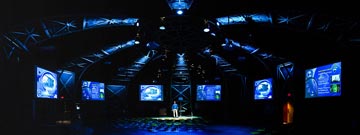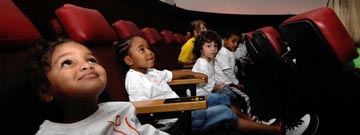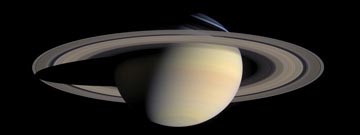- The Science Center will be closed on June 2 for Heinz Field Concert
Inflatable Classrooms
Digital Planetarium
Blast off through space and time with our new digital planetarium! Discover how powerful software and an HD projector makes our portable, inflatable dome more immersive for your learners than ever before. Experience the extreme weather and geological features of our Solar System's many planets and moons, then rocket beyond the Sun to witness wonders of the universe such as nebulae and black holes. Finally, watch for familiar celestial bodies as we shift from day to night-time sky, highlighting objects your students can see from their own backyards!
Capacity: 30 students
Time required: 45 minutes
Fee: $240 includes set-up and two presentations (shows can be different); $120 for each additional presentation.
Requirements: 12' ceiling height, 20' x 20' floor space, and electrical access.
Available Programs
One World, One Sky: Big Bird's Adventure
Elmo and his friend, Hu Hu Zhu, a Muppet from the Chinese co-production of Sesame Street®, go on an exciting trip to discover the Sun, Moon, and stars. At the end of the show, Big Bird, Elmo, and Hu Hu Zhu pick a friendship star to celebrate the idea that even though they live in two different countries, they still share the same sky.Pre-Kindergarten – 2nd grade
Made possible by: PNC Foundation
Moving Right Along
Moving Right Along is an introduction to Earth's rotation and revolution and how those movements affect our view of the sky.
Kindergarten – 2nd grade
What's Up
What's Up explores what we can see in the sky (stars, planets, the Moon) and differences between those objects.
Kindergarten – 2nd grade
Planets
Planets explores the differences between stars and planets, how we can recognize a planet in the night sky, and planetary motion.
Grades 3 – 5
Moons of the Solar System
Moons of the Solar System explores differences between planets and moons, and introduces students to major moons of the solar system.
Grades 3 – 5
Solstice and Equinox
Solstice and Equinox explores the relevance of solstices and equinoxes, including how they relate to the seasons we experience.
Grades 6 – 8
World in Motion
World in Motion explores what is in motion in our solar system. The Earth's movements give us the day and the year. Gravity keeps planets in orbit around the Sun and the Moon in orbit around the Earth. Learn how to recognize a planet in the night sky, and prograde and retrograde planetary motion.
Grades 6 – 8
Hubble Space Telescope
Hubble Space Telescope explores why the Hubble Space Telescope is in space, as well as some of the discoveries it has made.
Grades 9 – 12
The Sun
The Sun explores the age, energy sources, and structure of our closest star. This lesson discusses the sun’s role in supporting life on Earth. Students are also introduced to different types of solar eclipses.
Grades 9 – 12
Jupiter and the Galilean Moons
Discusses features of Jupiter and each of its four largest moons. It explores Galileo's contribution to modern astronomical knowledge. Students learn about some past, current and future missions to Jupiter or its moons.
Grades 9 – 12








